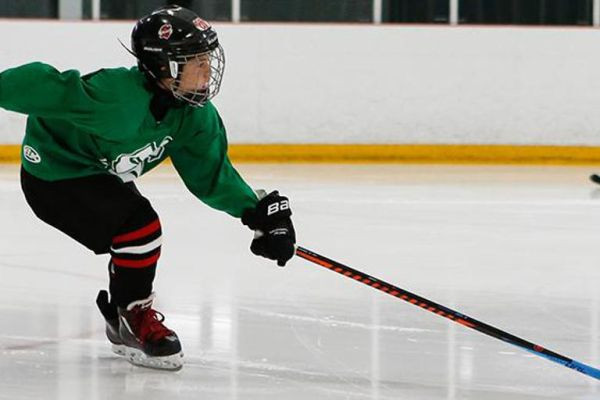For decades, players from the Canadian Hockey League (CHL) have faced significant barriers when it comes to their eligibility to play in the National Collegiate Athletic Association (NCAA) in the United States. However, recent developments suggest that this long-standing issue may be on the brink of resolution. On a podcast hosted by Hockey Night in Canada's Elliotte Friedman earlier this month, the notion that CHL players could soon gain NCAA eligibility gained considerable traction. According to Friedman, the trajectory is pointing towards a future where CHL players will indeed be able to compete in NCAA hockey, with the key question being the timeline for implementation.
Craig Button, a TSN analyst, echoed this sentiment, expressing confidence that such a policy change could come to fruition within the next couple of years. "I do feel that it’s something that’s going to happen," Button remarked, suggesting a potential implementation as early as the 2025-2026 season or within the next 18 months. Wayne Kosior of TrailBlazer Hockey Advisors, drawing from insights from his NCAA sources, similarly indicated a timeline of one to two years for these changes to take effect.
As a hockey advisor, Kosior's role involves guiding players through their options in junior hockey and beyond, helping them navigate decisions that could shape their careers in professional, U Sports, or NCAA hockey. Previously, eligibility rules dictated whether players could consider NCAA as an option after playing in the CHL. This impending change, however, could redefine the landscape for aspiring hockey players, offering them new avenues to explore their athletic and educational pursuits.
Kosior underscored the complexity that would arise should this rule change be approved, emphasizing the potential demand for advisors like himself. "Hockey is extremely complex and it’s only going to get more complex should this rule get approved," Kosior stated, noting the recent shift of five Alberta Junior Hockey League (AJHL) teams to the British Columbia Hockey League (BCHL) as an example of the kind of changes that players and families are navigating.
Currently, the eligibility rules are stringent: even a single game played in the CHL renders a player ineligible for NCAA competition. This rule has historically influenced drafting decisions in leagues like the Ontario Hockey League (OHL), Quebec Major Junior Hockey League (QMJHL), and Western Hockey League (WHL). However, with recent changes in Name, Image, and Likeness (NIL) rules allowing NCAA student-athletes to earn income, both the CHL and NCAA are compelled to reconsider their policies.
"The other part of this too is you have young players in both the United States and Canada that at the ages of 15 and 16 are asked to make big decisions about their future," Button highlighted. He emphasized the challenges these young athletes face in navigating their career paths, noting the significance of allowing their maturation process to unfold naturally without prematurely closing doors to opportunities like the CHL.
The potential changes also raise questions about their impact on other leagues, such as the Canadian Junior Hockey League (CJHL) and U Sports. U Sports teams often recruit players who have completed their careers in the CHL but are not yet ready to pursue professional opportunities. Kosior speculated on potential unintended consequences, such as U Sports losing players to NCAA hockey due to the appeal of competing in American collegiate athletics.
"There’s going to be some unintended consequences," Button concurred, pointing out that U Sports has benefited from players utilizing CHL education packages. These packages, which fund post-secondary education for players who complete multiple seasons in the CHL, have historically incentivized players to pursue higher education in Canada. With NCAA eligibility on the table, however, this dynamic could shift significantly.
"In my opinion, it’s just another phase in the evolution of hockey," Kosior reflected. He expressed confidence that the abundance of elite hockey talent emerging from the United States would ensure that U Sports continues to thrive despite potential shifts in player recruitment trends towards NCAA hockey. Kosior emphasized that while elite CHL players might opt for NCAA opportunities, the overall impact on player migration might not be as substantial as some anticipate.
Brad Herauf, head coach of the Regina Pats, shared his perspective on the potential changes, highlighting the broader educational opportunities that NCAA eligibility could create for players. He noted the positive implications of collaboration between leagues, suggesting that such changes could foster a more cooperative environment within the hockey community.
Current players like Sam Oremba and Ty Gibson of the Regina Pats expressed mixed sentiments about the prospective changes. Oremba acknowledged the new opportunities it could open for players looking to combine hockey with higher education, while Gibson admitted to uncertainties about how the changes might impact the WHL and its players.
Gibson also commended the current CHL scholarship program, which provides players with post-secondary education opportunities based on their tenure in the league. He emphasized the financial relief these scholarships provide for players navigating the costs of higher education, highlighting the tangible benefits some of his teammates have enjoyed.
Despite these positive outlooks, significant details remain to be ironed out before any collaboration between the CHL and NCAA can proceed. Foremost among these details is the exact timing and process by which CHL players would become eligible for NCAA hockey. This pivotal question underscores the complexity and deliberation required in aligning the policies of two distinct hockey leagues operating on either side of the Canadian-American border.
In conclusion, while the prospect of CHL players gaining NCAA eligibility represents a significant potential shift in hockey dynamics, particularly concerning educational pathways, numerous challenges lie ahead. From legal and regulatory considerations to logistical and administrative adjustments, the road to realizing this change is rife with complexities. Nevertheless, stakeholders across the hockey landscape remain optimistic about the transformative possibilities this policy shift could bring, emphasizing the importance of collaborative efforts and informed decision-making in navigating these uncharted waters.



